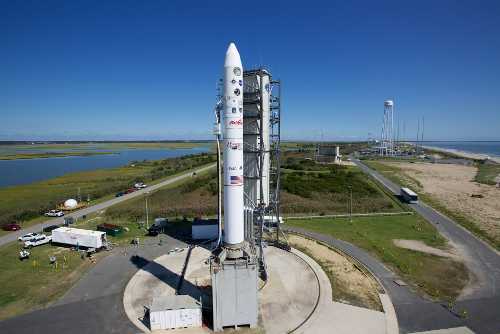
The Lunar Atmosphere and Dust Environment Explorer – or LADEE – is headed toward the moon after launching on a Minataur V rocket Friday night from NASA's Wallops Flight Facility in Virginia.
LADEE will orbit the moon to gather detailed information about its atmosphere, conditions near the surface and environmental influences on lunar dust.
LADEE is the first spacecraft designed, developed, built, integrated and tested at NASA's Ames Research Center in Moffett Field, Calif.
Using a Modular Common Spacecraft Bus architecture, also developed by Ames, LADEE will demonstrate how to build a first class spacecraft at reduced cost.
The LADEE spacecraft makes use of general purpose spacecraft modules that allow for a plug-and-play approach to manufacturing and assembly.
Earth's atmosphere is critically important to all of us. In addition to providing us with air to breathe, it protects us from temperature extremes, harmful space radiation, and vast numbers of incoming meteoroids. The atmosphere is a very complex system that we are only beginning to understand.
Gaining a better understanding of the atmosphere, how it protects us, and how we can protect it is in all of our interests.
In order to understand Earth's atmosphere and how it works, it is essential to study atmospheres under a wide range of conditions beyond Earth. Examining atmospheres on other planets allows this. For example, by studying the atmosphere of Venus, we learned about the role of carbon dioxide as a greenhouse gas, and saw how it drives the temperature on Venus as high as 860 degrees Fahrenheit (460 degrees Celsius).
The moon has a type of atmosphere scientists call a surface boundary exosphere. This very thin atmosphere may actually be the most common type of atmosphere in our solar system.
Yet despite occurring so frequently, surface boundary exospheres largely remain a mystery. The moon, Mercury, larger asteroids, many moons orbiting the solar system's giant planets and even some of the distant Kuiper Belt Objects beyond Neptune, all have surface boundary exospheres.
To fully understand atmospheres and how they work, we also need to understand the most common type. Fortunately, the moon is in our own celestial "backyard," and LADEE observations of the lunar atmosphere and surface conditions will provide insights scientists can apply to many worlds.
For more information about the LADEE mission, visit: http://www.nasa.gov/ladee .

 How to resolve AdBlock issue?
How to resolve AdBlock issue? 



